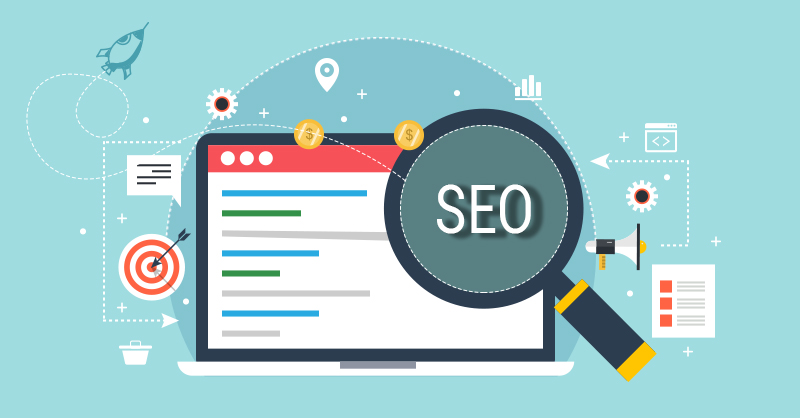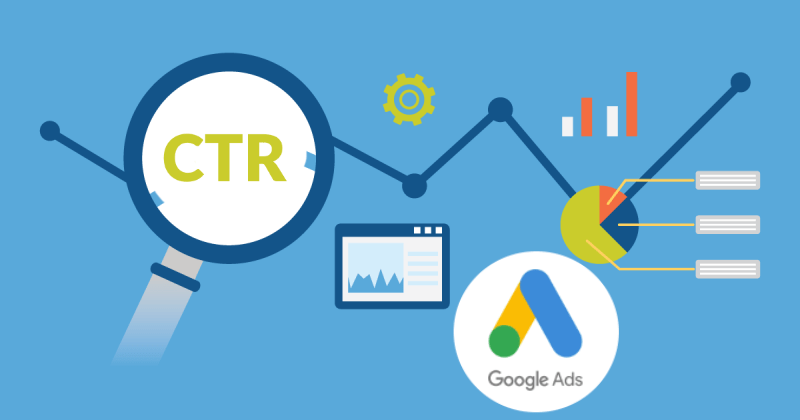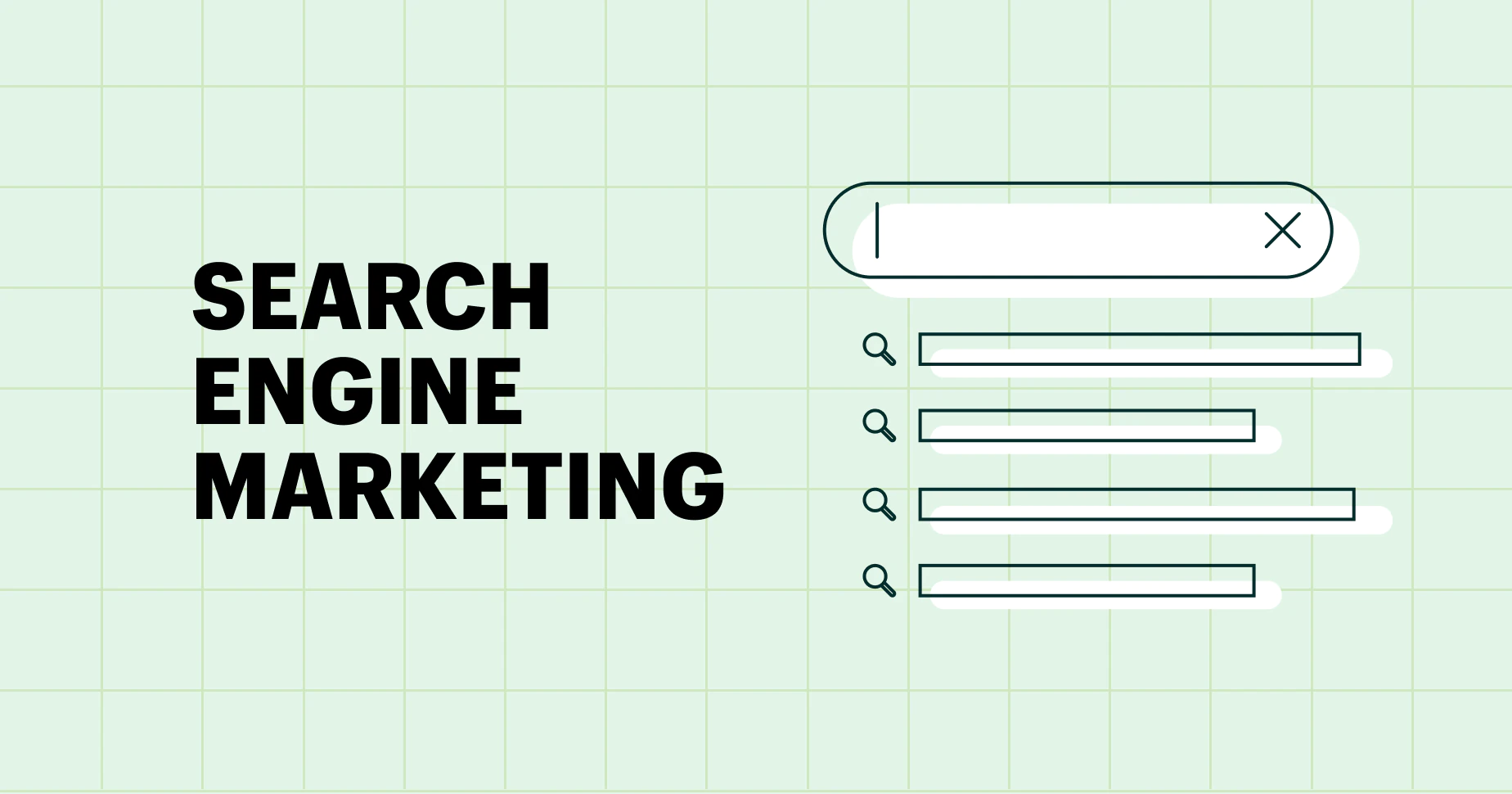SEO is a form of internet marketing that boosts a website’s search results. It uses strategies like keyword research, backlinking, and title tags to improve visibility on search engine pages.
SEM is crucial for internet marketing, along with PPC, social media, and content marketing. It increases website traffic and visibility, leading to higher sales and revenue. Multiple techniques improve keyword ranking.
On-page optimization:
Optimizing website elements, such as title tags, meta descriptions, and headings, is vital for search engine visibility. Including relevant keywords in these elements attracts users and improves rankings. Also, alt tags and URLs should incorporate keywords. Optimizing naturally enhances website visibility and attracts organic traffic.
Off-page optimization:
SEO is crucial for website visibility. Backlinks and social media engagement boost authority and organic visibility, leading to more content sharing, traffic, and natural backlinks. Including these activities is crucial for long-term success.
Local SEO:
To attract local customers, optimize your website with local keywords. Incorporate your location into the website’s title tags, meta descriptions, headings, alt text, and content. This boosts your local presence and attracts nearby customers, improving visibility and growing your local business.
Pay-per-click advertising:
PPC is paid advertising where you bid on keywords to have your ad appear in search engine results. It improves website visibility and draws traffic from potential customers actively searching for businesses like yours.
Types
Targeted SEM promotes websites through optimization and advertising for increased search visibility. It uses SEO to improve rankings and enhance pay-per-click listings. Different types of SEM cater to different marketing strategies.
Here are the four most common types of SEM:
- Search engine optimization (SEO)
This is the most common type of SEM. It involves improving the visibility of a website in search engine results pages through optimizing the site’s content; structure; and on-page elements like titles, metatags, and anchor text.
- Pay per click (PPC) advertising
This is the second most common type of SEM. PPC ads are displayed on SERPs alongside organic results. They are usually labeled as “sponsored” or “ad” results. Advertisers pay each time a user clicks on one of these links.
- Social media marketing (SMM)
This type of SEM involves promoting a website on social media platforms like Facebook, Twitter, and LinkedIn. The goal is to generate traffic to the site from these channels.
- Display advertising
This SEM type puts banner ads on websites/blogs to drive traffic to advertiser’s site. There are 4 common types of SEM with different approaches. Choose based on budget, goals, and target audience. Plan your own SEM campaign now!
The Importance
As the Internet has become more and more competitive, the importance of targeted SEM has grown exponentially. SEM is the process of using paid advertising to improve your visibility in search engine results pages (SERPs).
There are two main types of SEM:
- Pay-per-click (PPC) and
- Cost-per-thousand (CPM) advertising
PPC is a common form of SEM. It lets you bid on keywords for your ad. The cost per click depends on keyword competition. CPM advertising is similar, but you pay for every thousand ad impressions.
SEM is crucial for online marketing. It enhances visibility, targets specific demographics, interests, and locations to attract visitors. Include SEM in your budget and seek help from a reliable agency for an affordable campaign that aligns with your goals.
Main Goals
The main goals of search marketing are to increase website visibility and improve ranking in search engine results. This helps attract more traffic from users searching for similar terms, with a higher likelihood of clicking on a higher-ranked result.
The goal of search engine marketing is to get as many people to see your ad and click on it as possible. This will help you generate more leads and sales. However, if no one clicks on your ad, you will not make any money.
To succeed in search engine marketing, choose the right keywords and create a standout ad. If unsure, hire a company for help with keyword selection, ad creation, and result tracking.
Search engine marketing can be a great way to generate leads and sales. However, it is important to understand how it works before you start using it. Otherwise, you may end up wasting money on ineffective campaigns.
What To Aim At For The Targeted SEM?
When crafting your search engine marketing strategy, ensure you target relevant keywords with a high search volume.
To improve website ranking, create optimized content like blog posts and articles with targeted keywords. This boosts your visibility in search engine results, attracting more site traffic.
To promote your content effectively, share it on social media, submit it to directories and blogs, and spread the word. The more people who see your content, the higher the chance of them visiting your website. Remember these three things for success in search engine marketing.
Targeted SEM Strategy


Search engine marketing is about optimizing your website and content to appear high in search results. This requires high-quality, relevant content, easy navigation, and fast loading.
- If you want to attract more visitors to your site, you need to make sure that your site is visible in the search engines. Do this by using keyword-rich titles and descriptions, as well as by including backlinks from other websites.
- Another important aspect of search engine marketing is link building. This involves creating links from other websites back to your own. The more links you have, the higher your site will appear in the search results.
- Lastly, you need to make sure that your site is easy to find. You can do this by using descriptive titles and metatags, as well as by submitting your site to directory listings.
- By following these simple tips, you can improve your website’s ranking in the search engines and attract more visitors. However, it’s important to remember that SEO is an ongoing process, so you need to keep up with the latest trends and techniques if you want to stay ahead of the competition.
To learn about search engine marketing, use online resources and books, as they provide detailed information. Stay updated on the latest trends and techniques in SEO to maintain site visibility and attract more visitors.
Best Targeted Search Engine Marketing Tools
For SEM practitioners, using the right tools is crucial. They provide progress tracking, keyword discovery, and better results. With numerous options available, we’ve compiled a list of our top SEM tools to assist you.
HubSpot’s Ad Tracking Software
This software helps you monitor your Ads campaigns and assess their performance. It’s an excellent method to stay updated on your progress and identify areas for improvement.
SEMrush:
This marketing tool revolutionizes online businesses with features like keyword research and competitive analysis. It enhances your online presence, tracks website performance, and evaluates ad campaigns for search engine marketing success. It is user-friendly and boosts your digital competitiveness.
Google Trends:
A useful tool for keyword research enhances SEM campaigns by providing valuable data on keyword performance. It helps identify relevant search terms, provides search volume and competition data, and suggests long-tail keywords. Tracking keyword performance allows for adjustments to ensure effectiveness and attract more traffic and conversions.
Keywordtool.Io:
This tool helps you find long-tail keywords that you can use in your campaigns. It’s a great way to find keywords that are less competitive and more likely to convert.
Google Ads Keyword Planner:
This tool is crucial for SEM campaigns, providing keyword research, ad group creation, and analytics. It helps marketers with insights on keyword popularity, search volume, and competition. The user-friendly interface improves ad organization and campaign performance. It also offers competitor analysis for campaign optimization. Accessible to both professionals and beginners, with regular updates for staying up to date with SEM advancements. Essential for successful SEM campaigns.
SpyFu:
This tool enhances SEM with keyword research, competitive analysis, a user-friendly interface, and advanced reporting. It is regularly updated and trusted by marketers worldwide, revolutionizing SEM strategies for better results.
Word Stream:
This PPC tool enhances digital marketing with keyword research, bid management, and analytics. With a user-friendly interface, it boosts online visibility and drives business growth.
Bing Ads Intelligence:
Introducing a game-changing Bing Ads tool for beginner and experienced marketers. It revolutionizes campaigns with advanced keyword research, ad group creation, and data-driven optimizations. Start now and experience incredible success.
Google Tag Manager:
This tool is crucial for tracking codes and website traffic. It gives insights on code performance, visitor demographics, and sources. It tracks SEM campaign success and improves user experience with a friendly interface, optimizing codes for marketing success.
Adobe Analytics:
This analytics platform monitors website traffic and conversion rates. It is a useful tool for SEM campaigns and other marketing efforts. Try our preferred SEM tools to improve your campaigns and achieve better results.
Difference Between SEM and SEO


There are a lot of similarities between SEM and SEO, but there are also some key differences.
- Both SEM and SEO involve optimizing your website for better search engine visibility, but SEM goes a step further by also including paid advertising efforts.
- SEO is all about improving your website’s organic search engine rankings, with the goal of earning higher placement in the search results pages. SEM, on the other hand, encompasses both organic and paid search efforts, with the goal of earning higher placement in the search results pages AND driving more traffic to your website through paid ads.
- To sum it up, SEO is focused on improving your website’s ranking in the organic search results, while SEM includes both SEO and paid advertising efforts to improve your website’s visibility and drive more traffic.
- Both SEO and SEM are important for any business that wants to be visible in the search results pages, but which one you prioritize will depend on your unique business goals and needs. If you’re mostly focused on increasing organic traffic, then SEO should be your primary focus. But if you’re also interested in driving more traffic through paid ads, then SEM should be a key part of your marketing strategy.
SEM versus SEO: Which is Right for Your Business?
SEO and SEM have their own pros and cons. So, which one suits your business? It depends on your goals. If you want more organic traffic, focus on SEO. But if you also want to drive traffic with paid ads, include SEM in your strategy.
No matter which route you choose, remember that both SEO and SEM are important for any business that wants to be visible in the search results pages. By investing in both, you’ll give yourself the best chance of success.
Importance of SEO
Opinions vary on SEO’s importance, but it ultimately determines website success. If customers can’t find or navigate your site, they’ll leave without seeing your content. A comprehensive SEO strategy is crucial for success.
SEO is crucial for businesses wanting online success. It boosts visibility, accessibility, speed, and trust with customers.
The cost of SEO varies based on needs and goals. It is a valuable investment with long-term benefits. We can assist in creating a customized SEO strategy that fits your budget and meets your needs.
Here are some tips to get you started:
Choose the right keywords:
The first step is to choose the right keywords to target. These are the terms that potential customers are using to search for businesses like yours. You can use keyword research tools like Google AdWords Keyword Planner and Moz Keyword Explorer to find relevant keywords.
Optimize your website:
Once you’ve chosen your target keywords, it’s time to optimize your website for them. This means making sure that your title tags, meta descriptions, and other elements are optimized for the target keywords.
Build links:
Link building is a process of getting other websites to link back to your site. This helps improve your site’s authority and relevancy in the eyes of search engines. You can use tools like Moz’s Open Site Explorer to find opportunities for link building.
Engage in social media:
Social media is a great way to connect with potential customers and build buzz around your brand. Make sure to post regularly and include links to your website in your posts.
By following these tips, you can start to see improvements in your site’s ranking and traffic levels. Remember, SEO is a long-term process, so it’s important to be patient and consistent with your efforts.
FAQ
When advertising using search engine marketing (sem) you only pay?
You pay for ads when someone clicks on them. This is called CPC advertising. It’s also known as PPC advertising. You bid on keywords for CPC ads.
SEM allows you to bid on keywords related to your business, such as “plumbing”. When someone searches for these keywords and clicks on your ad, they are directed to your website. You pay for each click, with the amount called CPC. Each keyword has a different CPC, which can be adjusted anytime. You can also set a daily budget to control costs. SEM effectively drives traffic to your website.
SEM is an affordable way to promote your website. It brings in significant traffic and boosts your business. Start now and see results in a few days.
When using search engine marketing where can your ads appear?
Paid search advertising is a great way to get your website in front of potential customers who are actively searching for what you have to offer. But where do your ads appear?
SEM places ads on SERPs based on keywords. Ad position depends on CPC and ad quality, which is determined by relevance, landing page quality, and CTR.
Your CTR is a measure of how often people who see your ad click on it.


A higher CTR boosts visibility and ad placement. Improve CTR with relevant keywords, a matching landing page, and an attractive ad. Exclude certain searches with negative keywords.
To optimize paid search ads, use negative keywords to avoid irrelevant searches and reach potential customers searching for your products. Improve visibility by using relevant keywords, aligning ads and landing pages, and creating appealing ads to boost CTR and expand your audience.
How does google display ads drive marketing results?
Google search ads have a big impact on marketing. They drive traffic, generate leads, and boost sales. Businesses should understand how Google displays ads to achieve their goals.
When a user searches on Google, they receive a list of results that includes unpaid and paid results. Paid results are shown separately at the top or side, labeled as “sponsored” links.
Google’s algorithm decides which ads to show based on factors like ad relevance, quality, and advertiser bids.
There are two types of Google ads: text ads and image ads.
Text ads are short, typically consisting of a headline and two lines of text. Image ads are larger and can include images, videos, or other rich media.
Google provides various advertising options for businesses on its search engine results pages (SERPs). The most common method is pay-per-click (PPC), where businesses bid on keywords and pay when their ads are clicked.
Businesses can advertise on Google Display Network (GDN), a network of websites displaying Google ads. Ads are targeted to audiences in various formats like text, image, video, and rich media. They can also run video ads on YouTube via Google AdWords, targeting keywords and appearing before or after videos.
How does google display ads grow marketing results for advertisers?
Google’s ad platform effectively reaches a big audience and lets advertisers target interested users. Ads on Google’s search engine lead to more clicks and conversions.
Google’s ad success is due to its 2 billion users and popularity as the top search engine. Advertisers can reach a large customer base through active searches.
This makes it more likely that they’ll see relevant ads and click on them.
Finally, Google offers a variety of targeting options for advertisers, which allows them to specifically target their ads to users who are more likely to be interested in what they’re selling. Ultimately, all of these factors combine to make Google an incredibly effective ad platform that can generate significant results for advertisers.
To improve marketing results, try Google’s ad platform. It targets a large audience and offers effective options to reach interested customers, leading to more clicks, conversions, and better business outcomes.
What are the steps, in order, of the target marketing process?
- Define your target market.
- Research your target market.
- Develop a marketing mix that appeals to your target market.
- Implement your marketing plan.
- Evaluate the results of your marketing efforts.
- Make adjustments to your marketing plan as needed.
- Repeat steps 4-6 until you achieve your desired results.
Which of the following statements about the steps in the target marketing process is true?
- Setting marketing objectives is the first stage in target marketing.
- The last stage in the target marketing process is positioning.
- In the target marketing process, there are four phases.
- The second step in the target marketing process is to identify all segmentation variables.
- The marketing approach being targeted is not part of the positioning strategy.
Answer: Option (B) is correct.
What is an example of using cluster analysis in business to create target-marketing strategies?
Cluster analysis can help create targeted marketing strategies in business by identifying customer groups with similar purchasing habits. This data is then used to develop tailored marketing campaigns for each group.
Another way that cluster analysis can be used in business is to segment market areas according to customer characteristics. This information can be used to choose the locations for new stores or businesses, or to target specific advertising campaigns.
Cluster analysis helps analyze customer feedback to improve satisfaction. By identifying groups with similar complaints or suggestions, businesses can enhance the overall experience.
Search engine marketing can also be called what?
PPC is a search engine marketing method where advertisers pay for each click on their ad. It helps reach interested customers, drive website traffic, and generate leads.
To succeed in PPC, choose relevant keywords and create appealing ads for your target audience. Clicks on your ad lead to your website for more info.
Conclusion
Effective search engine marketing is crucial for website success. Employ appropriate strategies to enhance ranking and draw in visitors. SEO requires continuous attention to remain competitive. Utilize online resources and books to expand your knowledge.





















Leave a Reply
View Comments